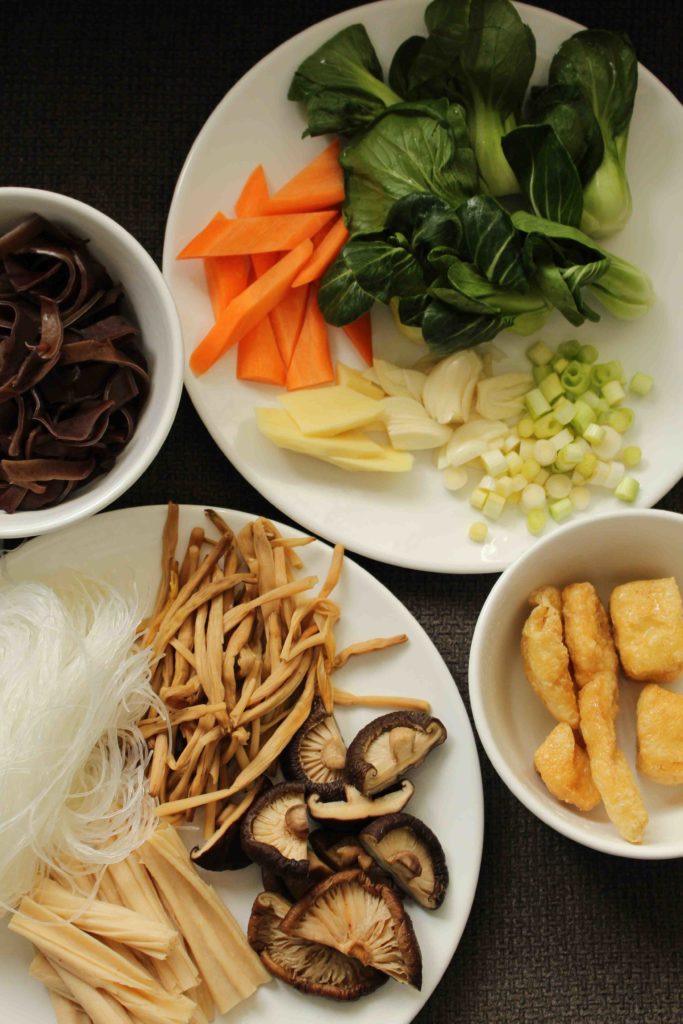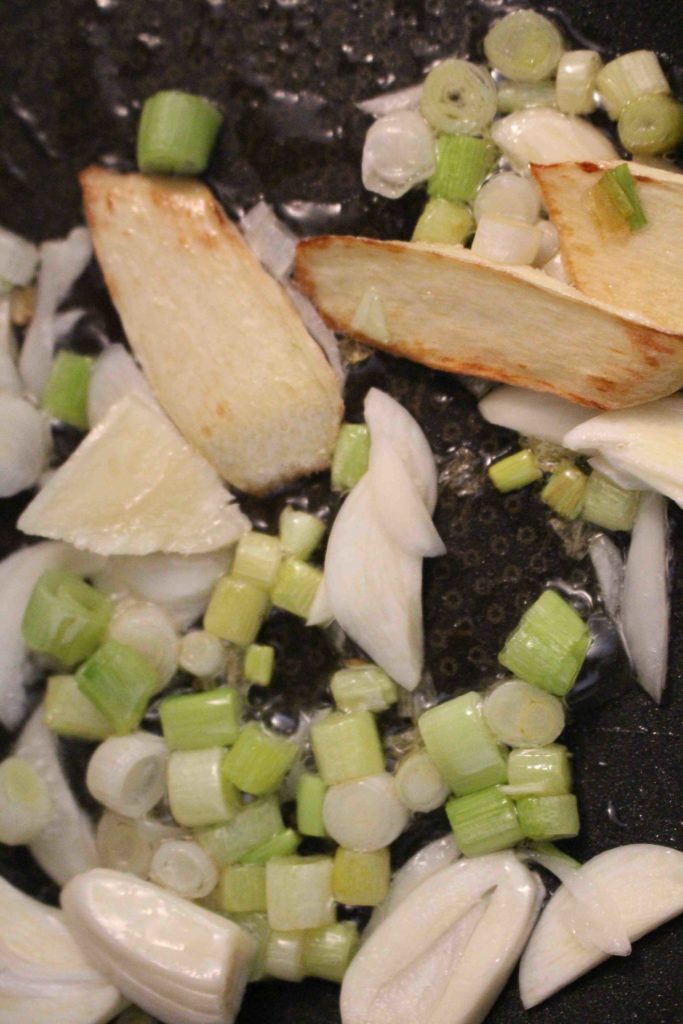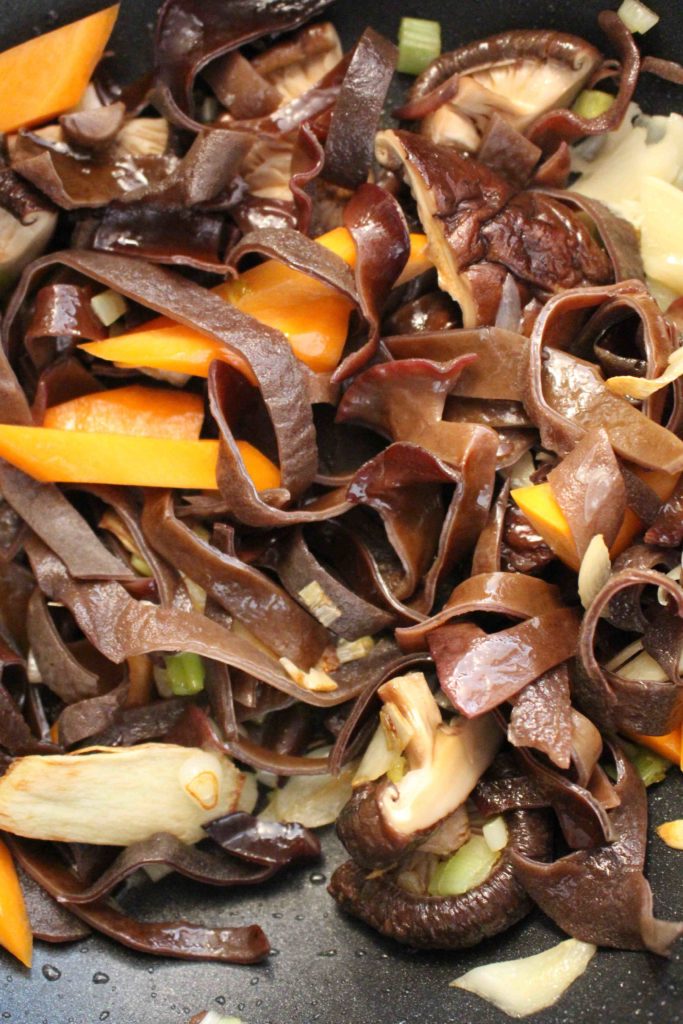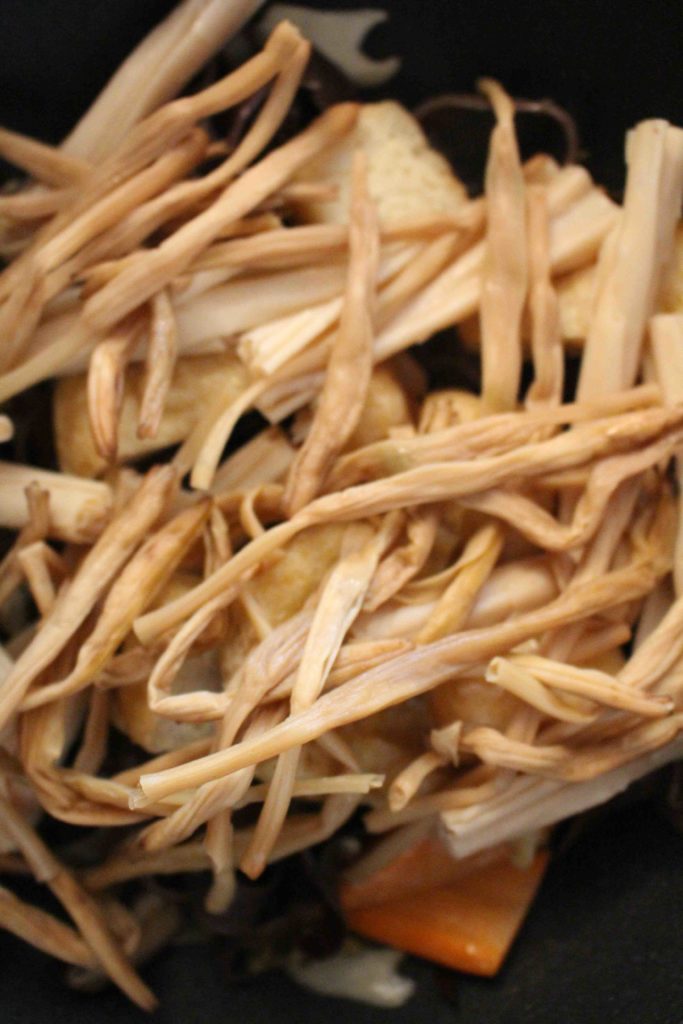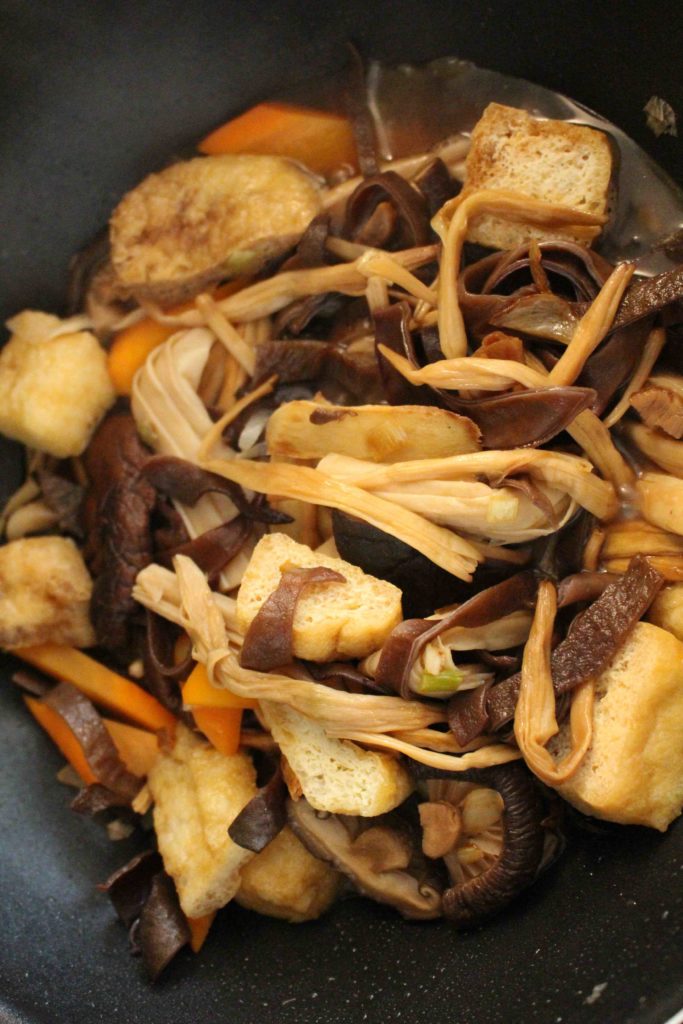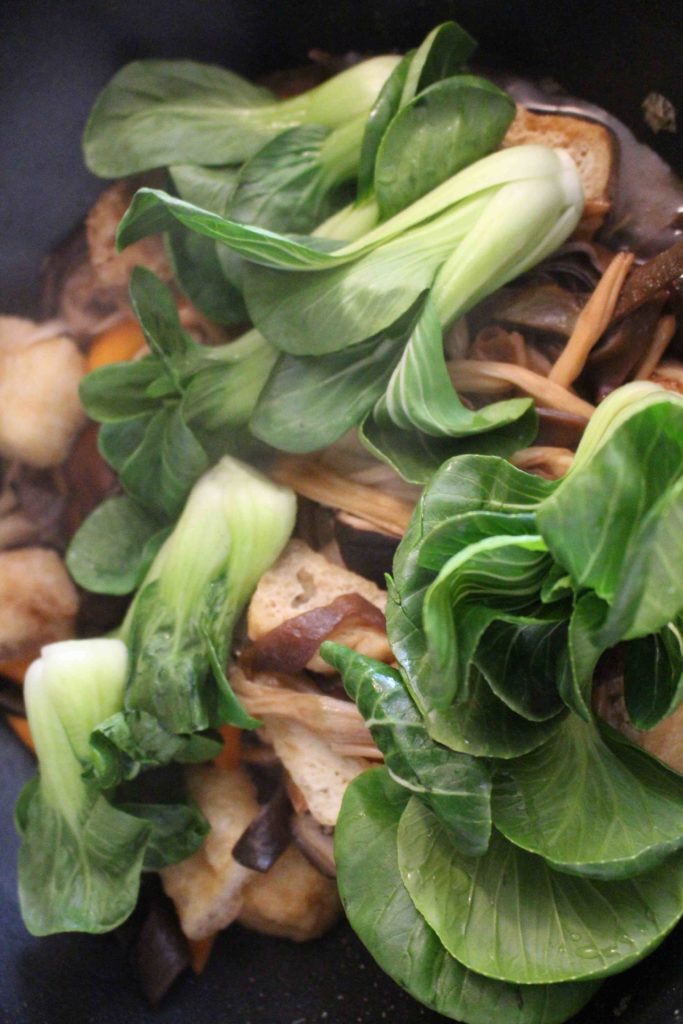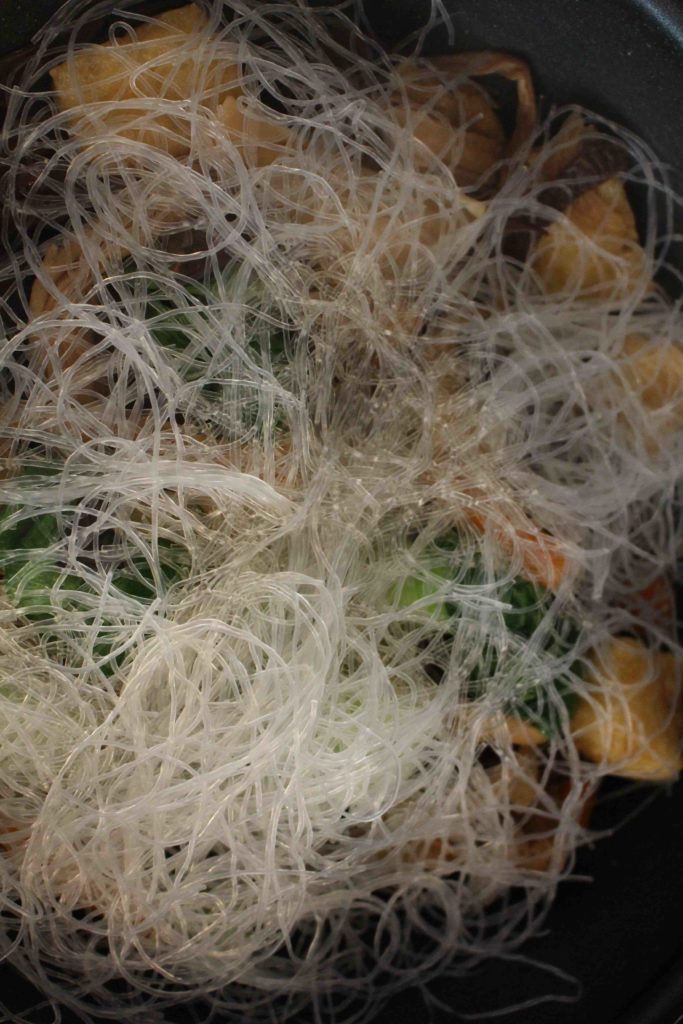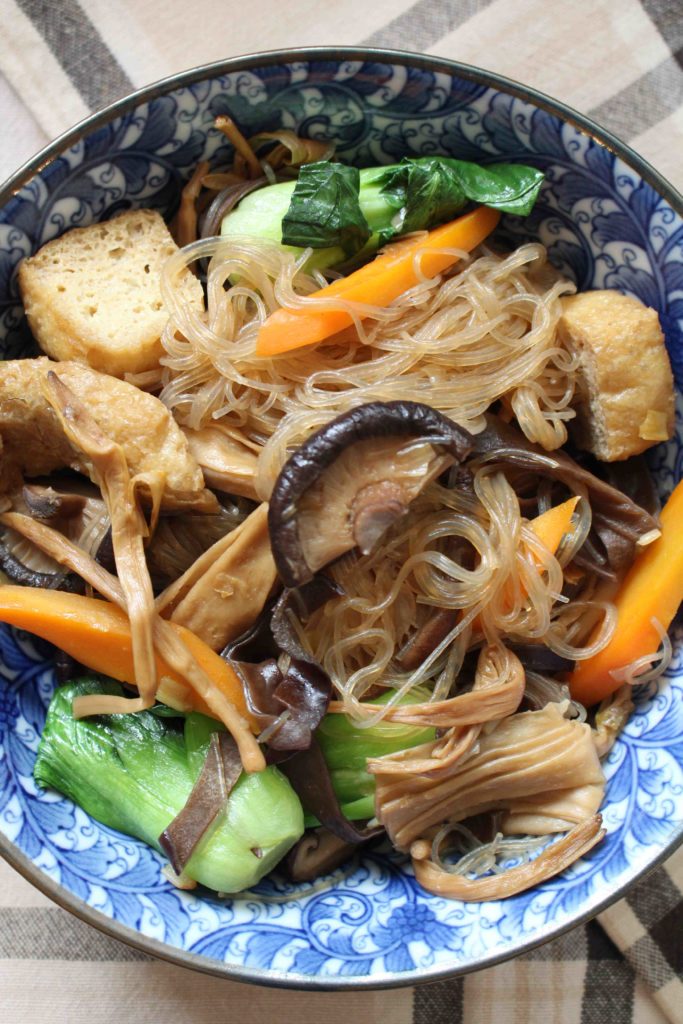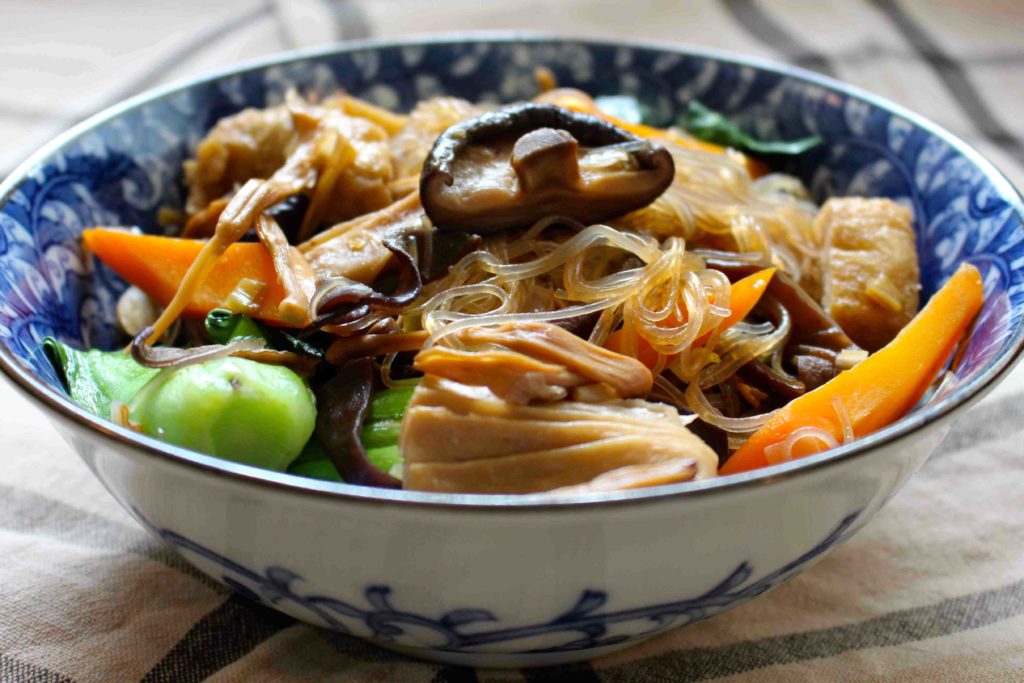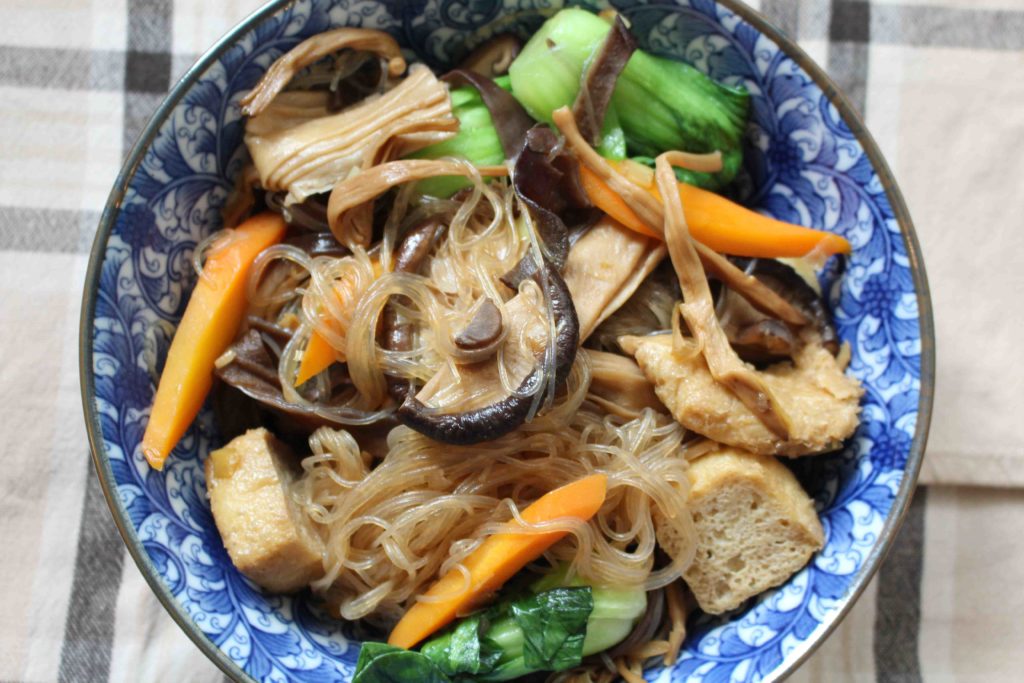As I walked to Leicester Square tube station after watching Aladdin: The Musical on Saturday night, I noticed kumquat trees for sale on store fronts in Chinatown. This could only mean one thing: Chinese New Year is almost here. Yup, this year, Chinese New Year falls on January 28.
Similar to any festivities, there will be lots of food served on Chinese New Year. However, abstaining from meat consumption on the first day is believed to enhance longevity and is also seen as a way to purify and cleanse oneself. As such, many family will prepare vegetarian dishes for the first day. One that is very common is Buddha’s delight.
Whilst my family is not Chinese nor are we Buddhists, my mom often prepares Buddha’s delight at home although we may not call it Buddha’s delight, per se. To us, it’s just simply “mixed veg”. Granted that my brothers and I all love vegetables, this dish is a firm favourite in our family.
It is said that the Buddha’s delight prepared by monks has at least 18 types of vegetables but for home cooking, what goes in pretty much depends on personal preference.
What I have used in this recipe is very much what my mom often uses. When preparing Buddha’s delight, you need to remember that you’re using a variety of ingredients and once combined, you could end up with a huge portion so budget accordingly. I always have to remind myself this fact — it’s not as if I have a family of 5 to feed!
Here’s what I used:
- 2 tbsp oil
- 1 inch ginger, sliced
- 3 cloves garlic, sliced
- 3 spring onions (white part only), sliced
- 1 handful dried lily flower*
- 5 dried shiitake mushrooms*
- 3 dried wood ear mushrooms*
- 1 handful dried tofu skin or fucuk*
- 1 small bundle mung bean noodles*
- 1 handful fried tofu puffs, whole, halved or quartered depending on size
- 1 carrots, sliced
- 5-6 pak choi
- 2 tbsp soy sauce
- 1 tbsp sugar
- 1 cup water (from soaking the lily flowers, or you can also use the one from the shiitake mushrooms) or vegetable stock
- 2 tsp sesame oil
* Needs to be soaked in cold water for a few hours to re-hydrate.
When making Buddha’s delight, you need to plan ahead as some of the main ingredients need to be soaked in cold water for a few hours to re-hydrate. If you’re short of time, using warm water helps to speed up the process.
Here are the main ingredients…
For the shiitake mushrooms, once re-hydrated, I cut them into half. As for the wood ear mushroom, I sliced them into small strips.
As with most chinese stir-fry, preparation is key as the cooking process is quick so all needs to be ready.
Add oil to the wok and heat to medium-high heat. Add the sliced ginger and fry until they are slightly caramelized, but don’t let them burn! Just about 30 seconds or so. Add the sliced spring onion and garlic and fry until the spring onions softens and the garlic becomes fragrant. No more than 1 minute.
Next, add the carrots followed by shiitake mushrooms and the wood ear mushrooms. Fry for a few minutes until the carrots are slightly tender – you don’t want them cooked yet at this point.
Add the lily flower, fucuk and fried tofu puffs. Stir and fry for another two to three minutes.
Now, add the pak choi.
Add also the water from soaking the lily flower, soy sauce and sugar. Increase the heat to high and stir for about 2 minutes. Reduce the heat back to medium and let it cook for another 5 minutes or so, stirring occasionally.
Add the mung bean noodles and stir so that all the ingredients are well mixed. The mung bean noodles should soak up most of the remaining liquid.
Have a taste and adjust accordingly. Lastly, add a few dash of sesame oil and give a final stir to incorporate.
If you’d like a little bit of heat, you can add some sliced red chili. They also add colour. I’m out of chili, so this will have to do.
Transfer to a serving bowl and enjoy with steamed white rice.xo
Note:
If you want to add/use different ingredients to your Buddha’s delight, just remember to add them to the wok in order of the time required for them to cook. For example, carrots will take a few minutes to become tender so they go in first compared to pak choi that takes much less time to cook.
